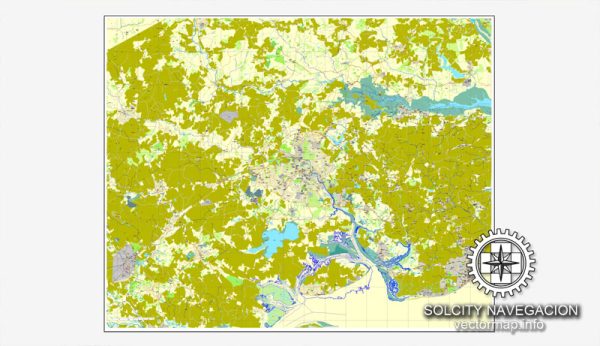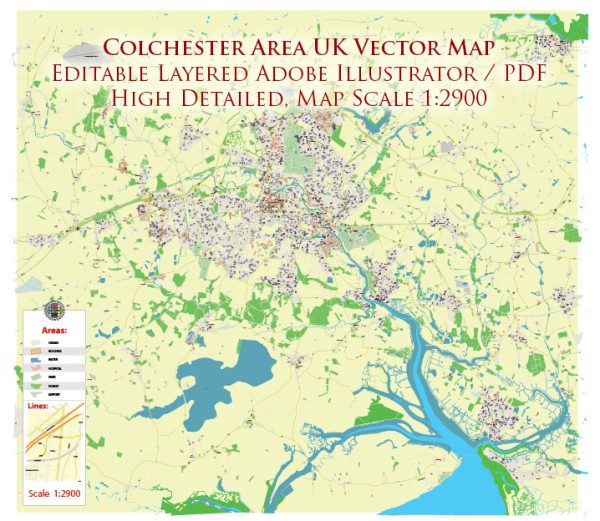Colchester, located in Essex, England, is one of the oldest recorded towns in Britain, with a rich history of urban development that spans over two thousand years. Here is a brief overview of the history of urban development in Colchester:
- Roman Period (1st century BC – 5th century AD):
- Colchester, known as Camulodunum, was the first Roman capital of Britain and a significant center of Roman power.
- The town was enclosed by impressive defensive walls, which were the earliest and largest example of their kind in Britain.
- The Romans built various public buildings, including a temple, a theater, and a chariot racing circuit, contributing to the town’s prosperity and urbanization.
- Medieval Period (5th century – 16th century):
- After the fall of the Roman Empire, Colchester went through a period of decline. However, it remained an important market town and maintained its strategic significance.
- During the medieval period, the town saw the construction of Colchester Castle. Built on the foundations of the Roman Temple of Claudius, the castle became a prominent symbol of Norman power.
- Colchester developed a medieval street plan, with narrow, winding streets that still characterize parts of the town center today.
- Tudor and Stuart Periods (16th century – 17th century):
- Colchester continued to thrive as a market town during the Tudor and Stuart periods. The wool trade was particularly important to the town’s economy.
- The Siege of Colchester in 1648, during the English Civil War, had a significant impact on the town. After the Royalist defeat, Colchester experienced economic decline and stagnation.
- Georgian and Victorian Periods (18th century – 19th century):
- The 18th and 19th centuries saw the expansion of Colchester beyond its medieval boundaries. The town’s population grew, and new streets and buildings were constructed.
- Industrialization brought changes to the town, with the growth of textile and brewing industries.
- The railway arrived in Colchester in the mid-19th century, further connecting the town to London and facilitating economic development.
- 20th Century to Present:
- Colchester continued to grow and modernize in the 20th century. Suburban development expanded the town’s footprint.
- During World War II, Colchester played a role as a military center, and the town experienced some damage from bombings.
- In recent decades, there has been a mix of preservation and redevelopment efforts, aiming to balance modernization with the preservation of the town’s historic character.
Today, Colchester stands as a vibrant town with a mix of historic and contemporary elements, reflecting its rich and diverse history of urban development. The Roman walls, medieval architecture, and Victorian buildings contribute to the town’s unique character and charm.



 Author: Kirill Shrayber, Ph.D.
Author: Kirill Shrayber, Ph.D.